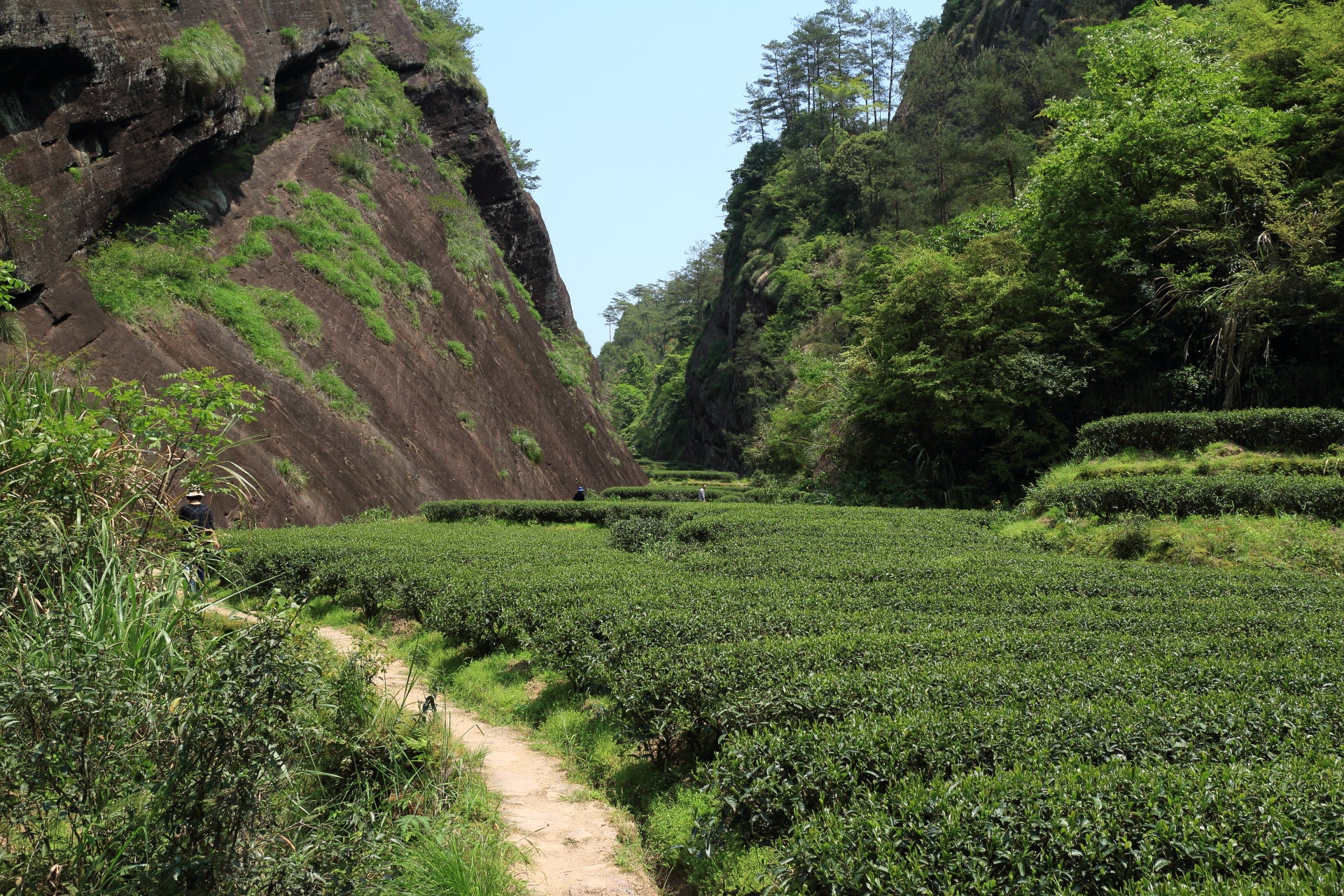Wusandi Laocong Shui Xian
Der Aufguss ist ein Musterbeispiel für perfekte Ruhe und scheint auf der Zunge zu ruhen, ohne Spannung, aber bereit, in Aktion zu treten. Die pikante Würze regt den Geist an, und die ausgeprägten Aromen von scharfem Sandelholz und getrockneter Rose weisen auf einen Ort der Meditation hin. Trotz der Fülle der Aromen ist er sehr süffig, was durch ein sirupartiges Mundgefühl und die prickelnde Säure der Brombeere unterstützt wird. Nach ein paar Jahren Ruhezeit ist jede direkte Spur von Röstung verschwunden, aber selbst diejenigen, die Röstung bevorzugen, werden sie bei einem so exquisiten Aroma nicht vermissen. Die Blätter stammen von alten Teesträuchern aus dem Dorf Wusandi, die traditionell ungeschnitten wachsen gelassen werden. Vielleicht kann man hier etwas darüber lernen, seinen Neigungen zu folgen.
- HERKUNFT: Wusandi, Wuyishan, Nanping, Fujian, China
- WAS DER NAME BEDEUTET: Alter Busch Wassergeist (lao cong shui xian)
- ZÜCHTUNG: Shui Xian
- GEERNTET IM: Mai 2021
- GESCHMACK: Sandelholz, getrocknete Rose, Brombeere
- Menge: 6g / 500ml
- Wassertemperatur: 90°C
- Ziehzeit: 5 Min.
- Menge: 3g / 100ml
- Wassertemperatur: 90°C
- 4 Aufgüsse: 45, 60, 60, 90 Sek.
Die besten Ergebnisse beim Gongfu Cha erzielen Sie, wenn Sie den Tee im traditionellen Gaiwan oder in einer Yixing-Teekanne zubereiten. Eine zu hohe Wassertemperatur könnte die Blätter verbrühen und zu einem bitteren Geschmack führen.
Zusätzliche Informationen
Authentic Wuyi Yan Cha is produced in the Wuyi Mount region, a UNESCO natural heritage site. The dramatic gorges of the Nine Bend River are surrounded by a largely intact subtropical forest and smooth cliffs of black-brownish rocks. The tea plants grow in narrow valleys, next to the cliffs, in a mineral-rich soil.
Today Wuyi Yan Cha is one of the most valued teas in China. Because it has become a status symbol, many wealthy Chinese are willing to pay a fortune for it without even knowing how a proper Wuyi Yan Cha should taste. The result has been prices inflating to unjustified level and quality often sacrificed for quantity.
Unique to the Wuyi Yan Cha is a mineral savor coming from the soil and the surrounding cliffs. Being the oolong with the highest fire finish, fresh Yan Cha may as a result be strong and pungent. Sharpness and too-prominent astringency subside upon ageing. Premium high-fire Yan Cha tastes better after a few years of storage. Use a Yixing teapot to soften the tea, should it be too astringent for your palate.
The overall tasting profile is rich, complex, and deep. Depending on cultivar and environment, the mineral-roasted flavor is refined by floral, fruity, nutty or woody accents.










